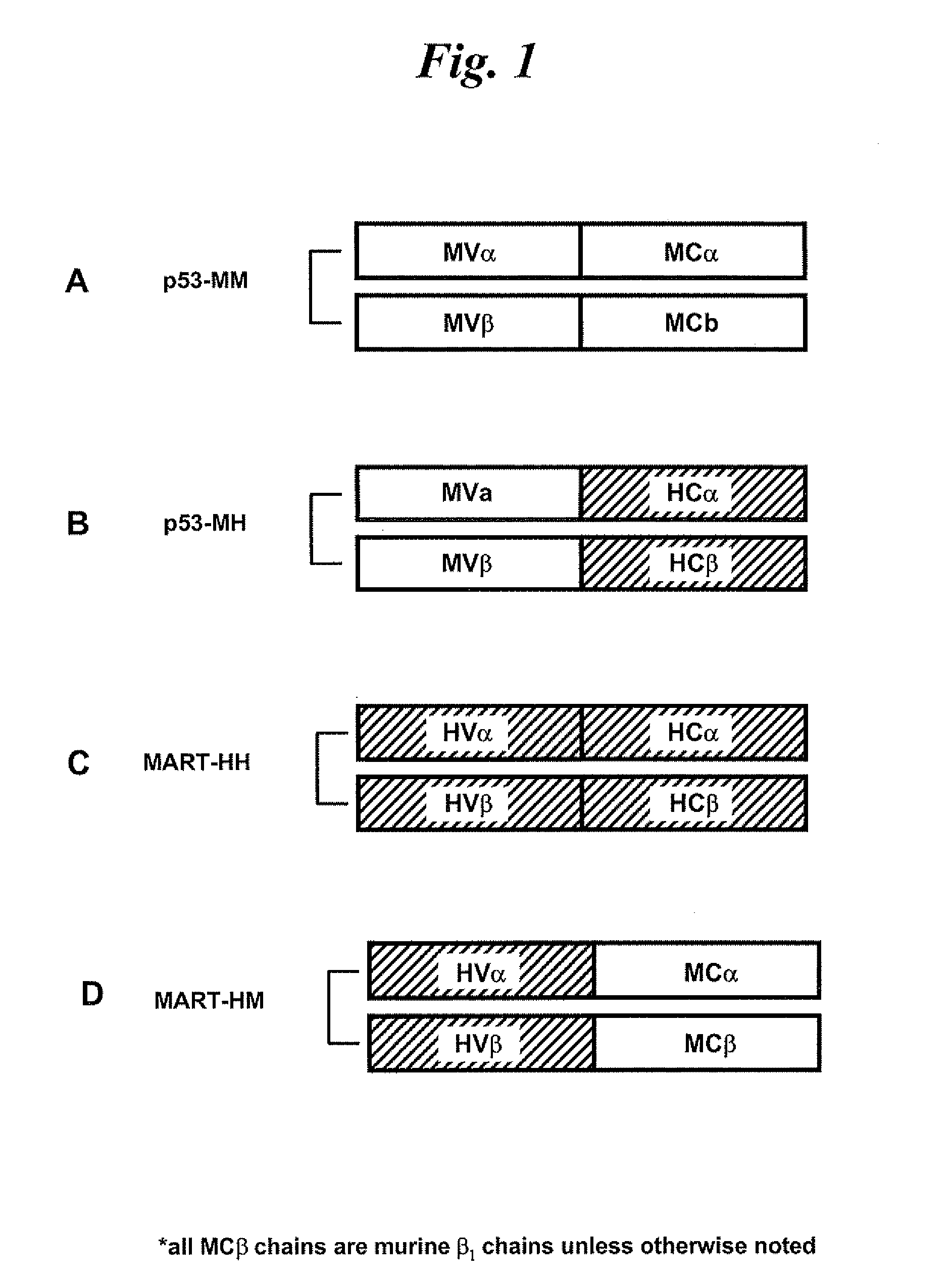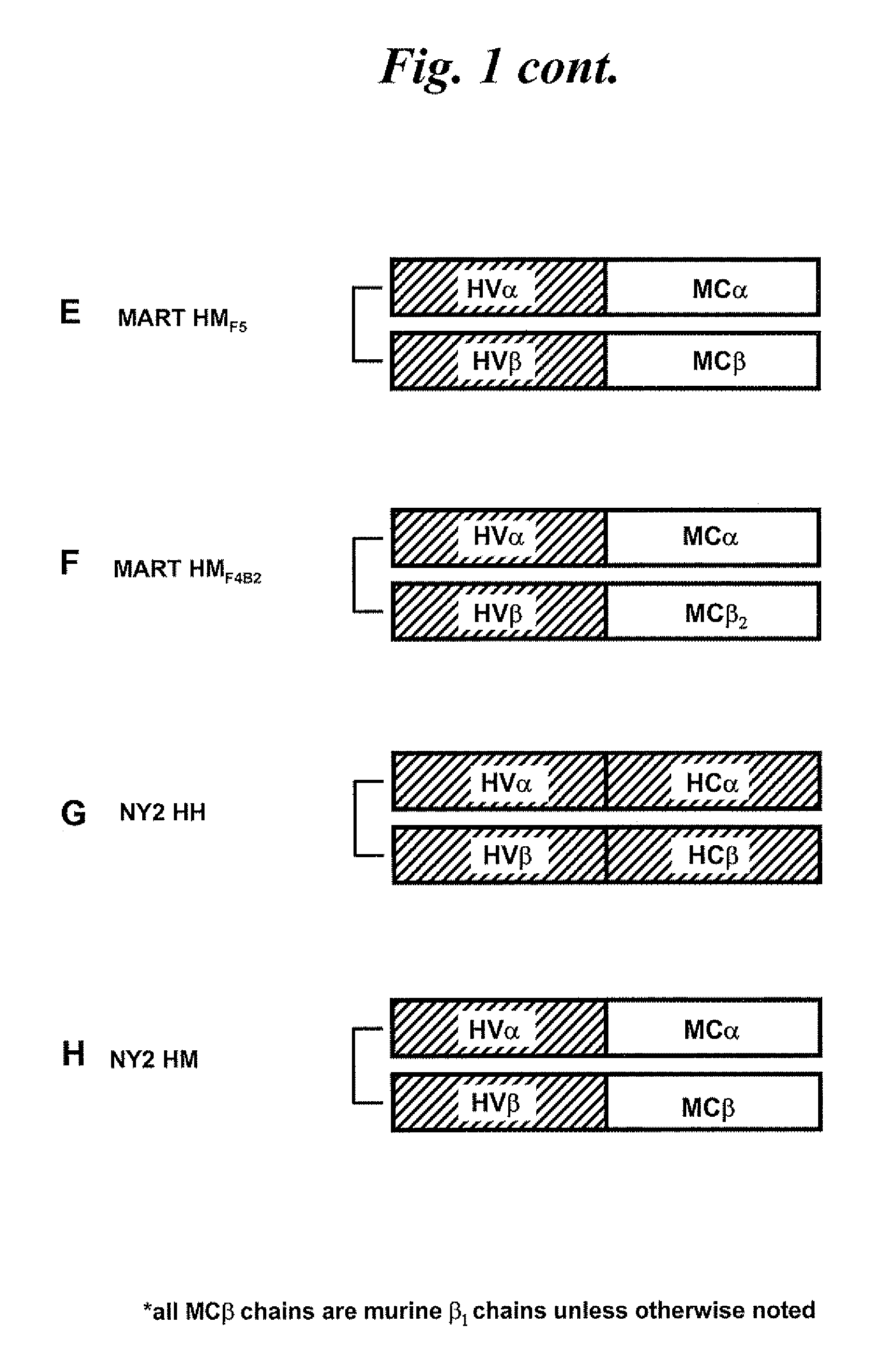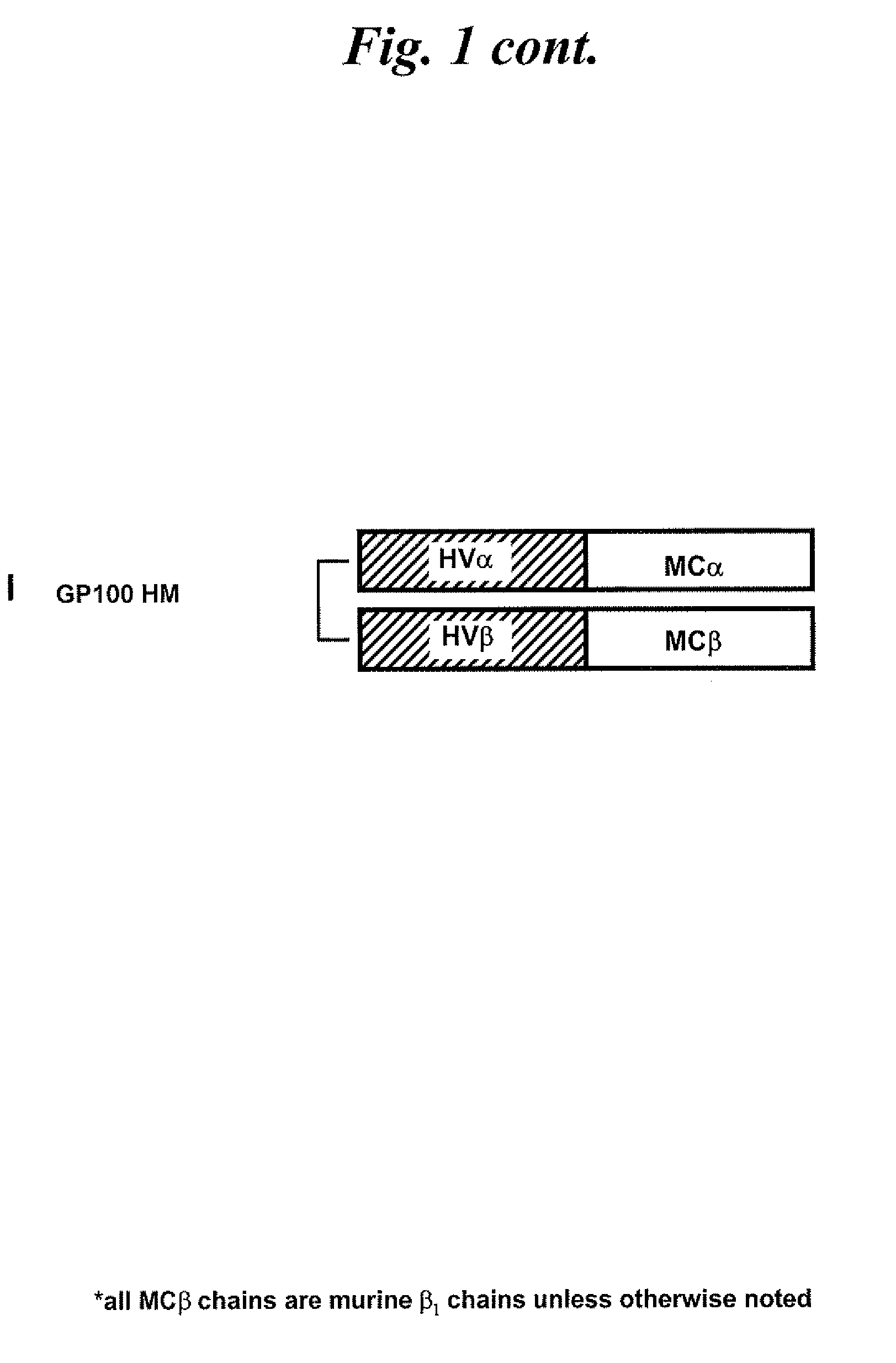Chimeric t cell receptors and related materials and methods of use
a technology of t cell receptors and t cell subunits, which is applied in the field of t cell receptors and related materials and methods of use, can solve the problems of undesirable tcr heterodimer, tcr gene transfer approach hurdle, and the need to isolate and expand tumor-reactive lymphocytes, so as to achieve enhanced biological properties and greater t cell responses
- Summary
- Abstract
- Description
- Claims
- Application Information
AI Technical Summary
Benefits of technology
Problems solved by technology
Method used
Image
Examples
example 1
[0134]This example demonstrates the generation of chimeric TCRs comprising a human variable region and a constant region comprising at least an extracellular domain of a non-human constant region.
[0135]The α and β chains of a murine TCR (comprising both murine variable and constant regions) specific for p53264-272 (Cohen et al., J. Immunol., 175, 5799-5808 (2005)) are sub-cloned into the pGEM-4Z / 64A vector as previously described (Zhao et al., Blood, 102, 4137-4142 (2003), Zhao et al., Mol. Ther., 12, 247-253 (2005)). This fully murine anti-p53 TCR is termed herein as the p53 MM TCR. The α and β chains of a human TCR (comprising both human variable and constant regions) specific for MART-1 / 27L (Hughes et al., Hum. Gene Ther., 16, 1-16 (2005)) are sub-cloned into the pGEM-4Z / 64A vector in the same manner as for the α and β chains of the p53 MM TCR.
[0136]Chimeric TCRs in which the original constant regions are replaced by either mouse or human constant region sequences are designed to...
example 2
[0151]This example demonstrates the enhanced biological activity of the chimeric TCRs.
[0152]Human PBLs are electroporated with the mRNAs of the TCR α and β chains of the p53 MM TCR, MART HH TCR, p53 MH TCR, or MART HM, with the mRNAs of the α chain of the p53 MM TCR and the β chain of the p53 MH (p53Mα / Hβ), with the α chain of the p53 MH TCR and the mRNAs of the β chain of the p53 MM TCR (p53Mβ / Hα), with the α chain of the MART HH TCR and the β chain of the MART HM (MART Hα / Mβ), or with the α chain of the MART HM TCR and the β chain of the MART HH TCR (MART Hβ / Mα), as described in Example 1. Electroporated cells are cultured and then stimulated with OKT-3.
[0153]T2 cells are pulsed with 1 μg / ml peptides specific for one of the TCRs (p53264-272 or MART-1 27L26-35 peptides) or with non-specific peptides (gp100 210M209-217, gp100280-288, HBVc 23Y18-27, or p53149-157) in medium for 2 hrs at 37° C. The pulsed cells were washed three times with medium.
[0154]The sequences of the peptides of...
example 3
[0161]This example demonstrates the preferential pairing of mouse TCR chains with their counterparts.
[0162]Because an increased proportion of MART-1 tetramer positive cells expresses the murinized form of the anti-MART-1 TCR (MART HM), rather than the fully human version (MART HH), it is hypothesized that the mouse constant regions preferentially pair with themselves.
[0163]To test this hypothesis, a competition experiment is performed. Briefly, TCR-deficient Jurkat RT3-T3.5 cells are electroporated with 1 μg of each of the α chain mRNA and β chain mRNA of either the MART-HH TCR or MART-HM TCR, in combination with 1 μg of each of the α chain mRNA and β chain mRNA of a competitor TCR (gp100-specific TCR (Morgan et al., J. Immunol., 171, 3287-3295 (2003)), p53-MH, or one of two NY-ESO-1-specific TCRs (a kind gift from Dr. Paul Robbins, Surgery Branch, NCI). One sample is electroporated with 0.2 μg of competitor TCR mRNA. Twenty four hours after electroporation, the cells are stained wi...
PUM
| Property | Measurement | Unit |
|---|---|---|
| concentration | aaaaa | aaaaa |
| pH | aaaaa | aaaaa |
| nucleic acid | aaaaa | aaaaa |
Abstract
Description
Claims
Application Information
 Login to View More
Login to View More - R&D
- Intellectual Property
- Life Sciences
- Materials
- Tech Scout
- Unparalleled Data Quality
- Higher Quality Content
- 60% Fewer Hallucinations
Browse by: Latest US Patents, China's latest patents, Technical Efficacy Thesaurus, Application Domain, Technology Topic, Popular Technical Reports.
© 2025 PatSnap. All rights reserved.Legal|Privacy policy|Modern Slavery Act Transparency Statement|Sitemap|About US| Contact US: help@patsnap.com



